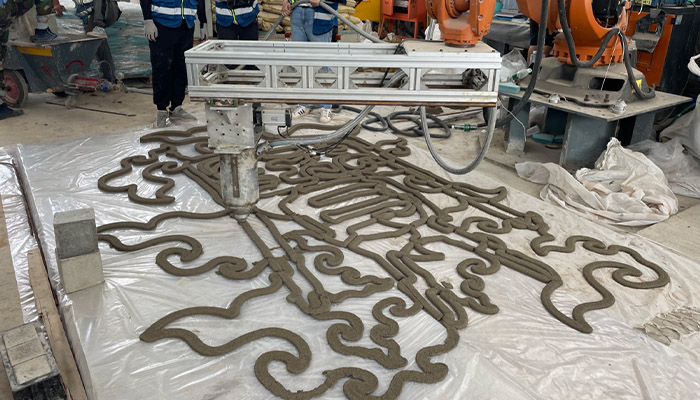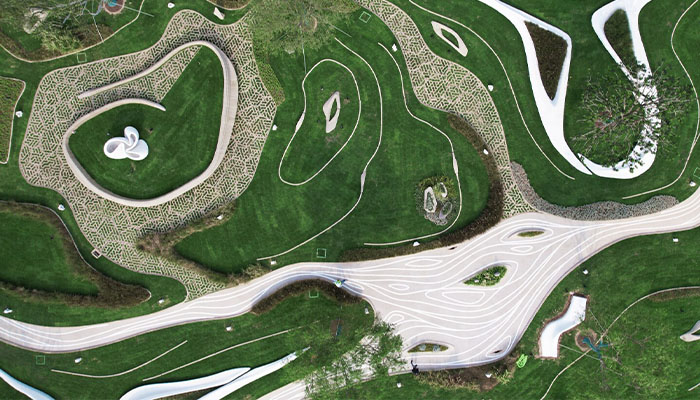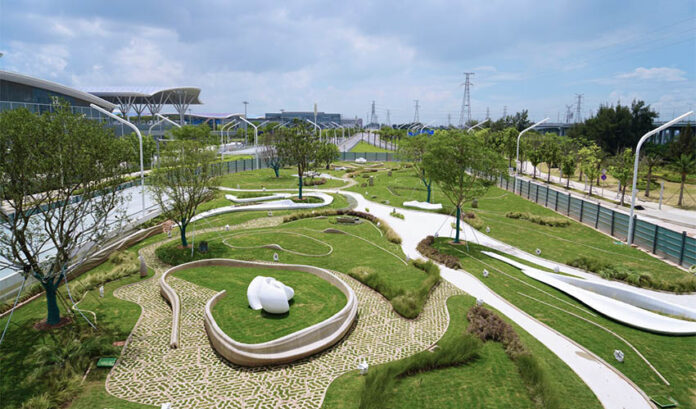Author: Madeleine P.
Date: 11/15/21
Usually when we talk about 3D printing and construction, it’s in relation to the now numerous buildings made with 3D printed walls. Between houses, stores, offices and even schools, there are countless initiatives mixing 3D printing and the building sector. Now another company has recently made the news. Advanced Intelligent Construction Technology, also known as AICT, has used their machines to decorate a park using 3D printing for concrete structures and other objects in Shenzhen, China.
With a surface area of 5,523 square meters, the park has more than 2,000 3D printed elements according to AICT. This includes sculptures, benches, flower beds, retaining walls, and curbs which adorn this large green space. Xu Weiguo, a professor at Tsinghua University’s School of Architecture, is in charge of the project. He explained why he and his team opted for additive manufacturing, stating “As a form of intelligent construction, 3D printing concrete construction technology boasts great advantages. Compared with reinforced concrete, 3D printing is relatively cheap, since the building simulation stage will solve technical problems in advance and come up with the optimum construction method.” Note, by the way, that this is not Professor Weiguo’s first 3D printing project – he also used concrete 3D printing to build a book cabin in Shanghai.

The printing process for one of the structures present in the park (photo credits: AICT)
A more sustainable construction method
Ecological factors were an additional motivator for the people behind the project to chose additive manufacturing. Unlike traditional concrete, 3D printed concrete does not require any formwork, which is usually made of wood and discarded after use. The one developed by AICT is said to be composed of 50% sand that can be obtained locally, thus reducing the environmental footprint and transportation costs. Furthermore, 3D printing allows concrete to be printed only where it is needed, using only the amount of material required.

Analysis:
This park is a fascinating use of concrete 3D-printing. It stands out as an example of this technology in use where the finished product is spread over a large area. There isn’t one central structure. It is a collection of individual elements that work together in harmony. The elements are mix of function and aesthetic, and most serve both purposes. In addition, they point out a number of specific ways that the process is more efficient, and I found this very eye-opening. For example, if these elements were made with traditional concrete pouring, large, material-intensive structures would need to be built, only to be disassembled and discarded upon completion. This is a huge sink of time and materials. The 3D printing process allows everything to be planned and simulated beforehand so that the actual manufacturing phase is just about depositing an efficient amount of material, letting it set, and moving on to the next one.
Source: https://www.3dnatives.com/en/first-park-3d-printing-china-151120214/#!




